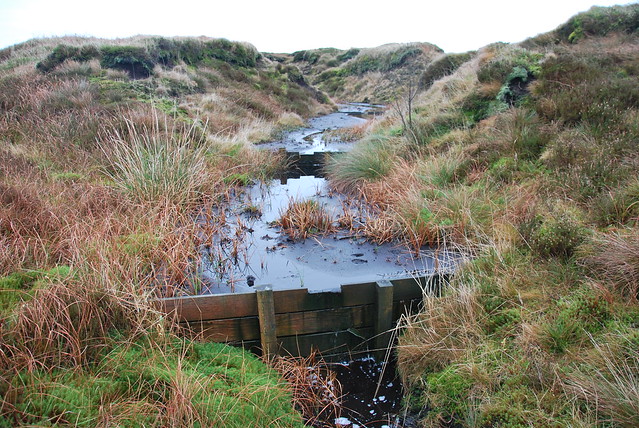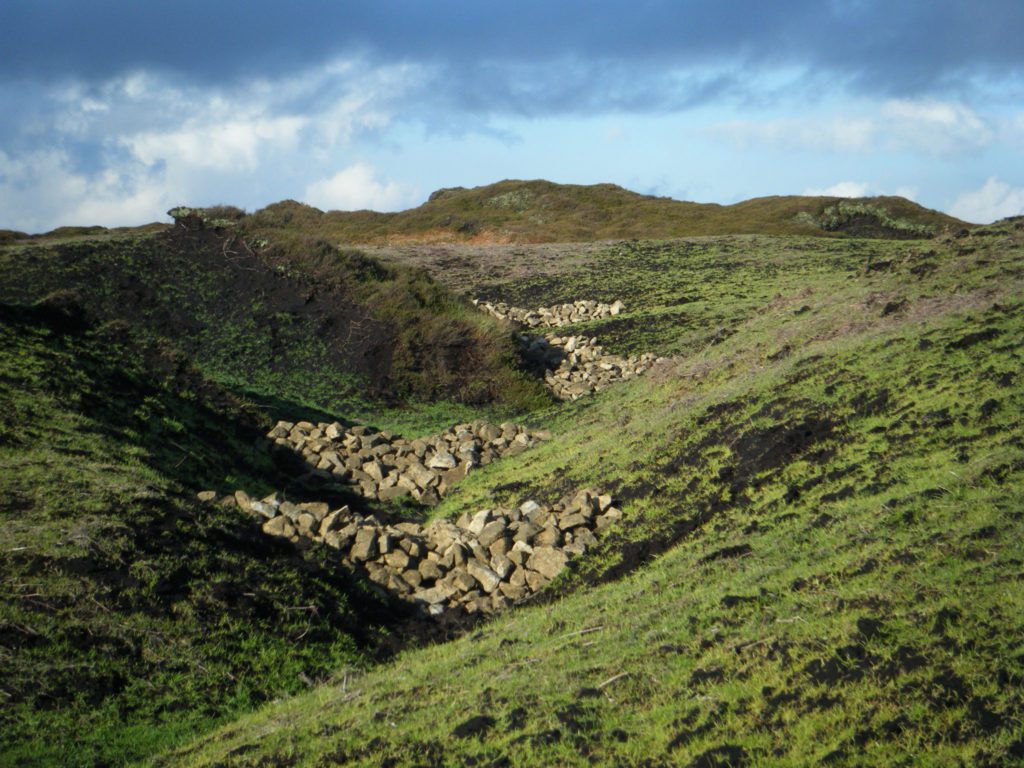Restoring peatlands: the most efficient terrestrial carbon-sink in the world
Picture from Pixabay
The Moors for the Future Partnership is working to restore degraded peatlands since 2003 in the Peak District National Park and South Pennines. Natural England gave a boost of nearly £2 million to the partnership with the attribution of the Water Environment Grant (WEG), for the implementation of the project “Building Blocks – Next steps in Gully Blocking”.
Peatlands. An amazing landscape providing numerous ecosystem services
Peatlands are the largest natural terrestrial carbon store, and damaged peatlands are a major source of greenhouse gas emissions. Thanks to the unique characteristics of these ecosystems, formed from plant matter partially decomposed and accumulated through thousands of years, when healthy they serve as:
- Habitats: Due to the low level of nutrients available, they are the habitat for rare and well-adapted species, including many endangered birds.
- Wildfire safeguards: By keeping itself wet holding a great amount of water.
- Climate-change natural fighters: They are the most effective terrestrial carbon-sink, they absorb and store carbon from the atmosphere
- Water filters: fundamentally because of the sphagnum moss, the water is filtered and cleaned.
- Preventers from flooding: They absorb and decrease the speed of the water, avoiding soil erosion at the same time.
- Beautiful and calming places: For the people to enjoy, relax and practice many activities.
However, when damaged, their services decrease: they release the stored carbon and other heavy metals and increase the risk of wild fires. Thus their restoration is of utmost importance… and peatlands are an essential weapon in the battle against climate change, alongside other campaigns such as the replanting of trees. The key is to stabilise the bare peat by maintaining the vegetal blanket that covers it.

Peak District National Park
Protecting the most degraded landscape in Europe
In the South Pennine Moors, 200 years of historic air pollution from the industrial revolution and wild fires have led to this area being degraded on a massive scale. The vegetation on the moors has been stripped away, exposing bare peat, which is easily eroded, releasing carbon back into the atmosphere, increasing the risk of wildfire, and making floods more likely downstream.
Bare peat is also washed downstream into reservoirs, which, as it contains heavy metals deposited by centuries of pollution, is costly for water companies to clean.
The Moors for the Future Partnership
Since 2003, projects undertaken by Moors for the Future Partnership have used innovative conservation techniques to restore the degraded peatland:
they have already transformed 32 sq kilometers of black degraded peat, installed over 30,500 mini-dams, to slow water run-off, and form natural flood management, and planted sphagnum moss and other natural moorland plants to stabilise the bare peat.
Recently, the Partnership has secured a project funded through the Water Environment Grant (WEG) by Natural England, of nearly £2 million. The project “Building Blocks – Next steps in Gully Blocking” is focused on improving the biodiversity and reduce the water coloration of the South Pennine Moors by keeping the hydrological integrity of the blanket-bog.
The Building Blocks project will enable the Partnership to map a further 100,000 gullies that need their attention, allowing them to create a list of areas to prioritise in the coming years, and further enhance a collaborative partnership working well, both within designated and non-designated landscapes, ensuring resources are secured for the most sensitive landscapes.
The measures:
-Installation of 7.800 gully blocks to slow water run-off and form natural flood management.

Dam slowing the sediment – Peak District National Park
–Plantation of 400 ha of sphagnum moss to allow the colonization of vegetation

Stone Gully Blocks – Peak District National Park
–Creation a list of areas to prioritise by mapping 100.000 gullies for future work.
Climate change has created many new challenges, not least flooding. The Building Blocks project from Moors for the Future Partnership is exactly the sort of forward-looking, Natural Flood Management initiative needed to create a nation ready for, and resilient to, flooding. It also helps to store carbon on the moors, providing long-term protection against climate change itself, and improves water quality,
said Louise Cresswell, Area Director for the Environment Agency. The 24-month project will allow the Partnership to improve biodiversity, and reduce water colouration. It is in line with the Environment Agency’s Draft National Flood and Coastal Erosion Risk Management Strategy for England and its part-funded by the European Agricultural Fund for Rural Development.
The work of the partnership is delivered by the Moors for the Future staff team through the Peak District National Park Authority, and supported through its partners including the Environment Agency, National Trust, RSPB, Severn Trent, United Utilities, Yorkshire Water, Pennine Prospects and representatives of the moorland owner and farming community.
